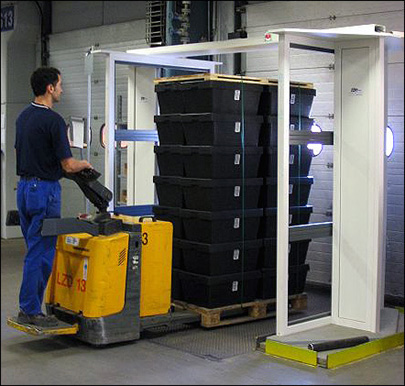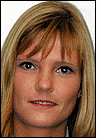When a leading German book retailer, Thalia, decided to invest in new containers for transporting books from its central warehouse to retail stores, it opted to add RFID tags to the mix.
Thalia’s logistics and warehousing provider, Rhenus, is now using about 120,000 tags in the application, which has been operational since 2004. Each of the 60,000 containers in circulation carries two 13.56 MHz passive tags complying with ISO 15693. The company’s goal is to ensure that every container makes it back from the store to the warehouse. To make it easier for employees to scan the polypropylene bins regardless of how they are stacked, it has deployed two tags, encoded with the same unique ID number, on opposing sides of each container. The tags are embedded in paper labels printed, in bar code and human-readable text, with the same ID number encoded to the tags.
The bar codes are used to control and expedite the process of picking and sorting 18 million books per year from warehouse shelves, as well as preparing them for shipping. RFID comes into play when goods leave the warehouse in containers, and when empty containers return to the warehouse.
The head of the Rhenus logistics center in Dortmund, Kerstin Kleine-Wienker, says Rhenus and Thalia made a conscious effort to keep the application simple, hoping to gain experience with RFID. “It’s a new technology, and we wanted to see how we could use it and expand it later on,” she explains.
Here’s how the process works: A worker receives an electronic work order and follows prompts from a warehouse management system. The prompts appear on a display mounted onto a picking rack holding eight RFID-tagged containers. Responding to the prompts, the worker wheels the racks to a specific bay, identifiable by means of bar-coded labels. Upon arriving at the bay, the employee uses a bar-code reader attached to the cart to scan the bay’s bar-code label. If the bay is the correct one, the worker receives an electronic confirmation and is prompted to pull out the appropriate books to fill orders. A light on the rack holding the containers then blinks, providing a visual tip about where to deposit the books. When the picking and sorting is finished, personnel wheel the cart to a conveyor belt and unload each box onto it. Bar codes on the containers are scanned so the bar-code-based picking-and-sorting system knows which container it is working with, then the boxes are weighed and a packing slip and address label are printed.
By calculating the weight of the books intended to be picked, the computer system knows how much each container should weigh. If the actual weight confirms that the order is correct, a worker inserts the packing slip into the container and applies the mailing label to the lid.
The boxes are then sent by the conveyor system to a separate holding location for each particular delivery region, such as Hamburg or Frankfurt. This is where RFID comes into play. When a pallet is loaded with as many as 28 stacked containers, a worker ties off the pallet and moves it through one of two RFID-enabled portals at the warehouse. The reader in the portal interrogates each container’s RFID tag within seconds; workers no longer have to scan each outgoing bin separately by hand with a bar-code reader.

Kleine-Wienker says Rhenus and Thalia are satisfied with the system: “It has been running a long time, and it’s stable,” she says. “We operated our previous bar-code system of controlling outgoing goods simultaneously with the RFID system. Once we saw that the data read rates were consistently correct, we stopped scanning outgoing goods with bar-code readers.”
The information collected is compared with shipping orders and stored in the warehouse management system, enabling Rhenus to determine which bins were shipped to which stores, and when. Bar codes could only track the number of bins; now, with the unique number on the RFID tag, Rhenus knows exactly which bins went to which location. If a store fails to return a bin, Rhenus knows which of Thalia’s more than 100 outlets to call to find the missing container. Rhenus and Thalia would not disclose the cost of each bin.
When the empty containers are returned to the warehouse, an employee once again wheels them through an RFID-enabled portal, which reads the bins’ tags. The information collected via RFID is stored in the system, informing Rhenus as to which bins are available for reuse.
TBN implemented the RFID system for Rhenus and Thalia, supplying tags from Herma and custom-made readers.
Thalia and Rhenus calculated an expected ROI at the time they designed the system, but the companies have declined to disclose any financial information. For the future, Rhenus is planning further RFID applications with other clients, including office supply retailer Staples.


